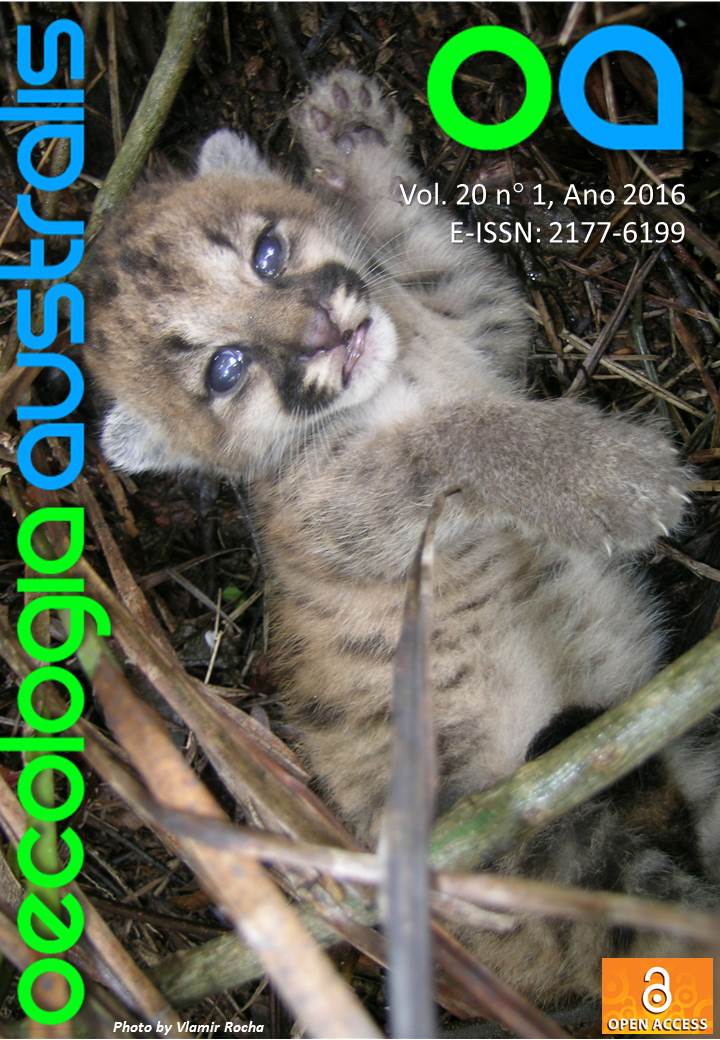CARACTERÍSTICAS ASSOCIADAS AO RISCO DE EXTINÇÃO NOS MAMÍFEROS TERRESTRES DA MATA ATLÂNTICA
DOI:
https://doi.org/10.4257/oeco.2016.2001.07Keywords:
biodiversity, conservation, ecology, mammal fauna, threatened species.Abstract
CHARACTERISTICS ASSOCIATED WITH RISK OF EXTINCTION IN BRAZILIAN ATLANTIC FOREST MAMMALS
The susceptibility of a species to extinction can be related to three groups of characteristics, namely, distribution (endemism and restricted distribution), biology (body size, trophic guild, reproduction) and human impacts (hunting). A survey of these characteristics was made in terrestrial mammals of the Brazilian Atlantic Forest to determine their distribution in individual species of each order, and estimate which orders have higher expected average proportion of species susceptible to extinction. These estimates were compared with official threatened species lists. Principal components analysis (PCA) was used to find which characteristics best define the proportional susceptibility to extinction in each order. Spearman´s correlation was used to determine if global, national, and state evaluation scales affected the relationship between the expected average susceptibility and the listed threatened species for each characteristic. Lastly, linear regression was used to test the dependence of the number of threatened species to the total number of species with each characteristic of susceptibility. PCA grouped species with larger body size, wider distribution, and more hunting in a given order and grouped smaller body size, narrower distribution and less hunting on the same axis. The second component grouped the orders most affected by characteristics which increased susceptibility to extinction and the orders least affected. There was a significant positive correlation (p<0.05) between the expected averages and the listed averages obtained at global and national levels, but not at the state level (p=0.32). Linear regression showed significant relationship (p<0.05) between the number of species listed in each state and the number of species with low reproductive rate, carnivorous diet, and hunting. This study demonstrates the importance of the characteristics which render species more susceptible to extinction, increasing efficiency in species listing and, therefore, helping to improve conservation efforts.
Downloads
Downloads
Additional Files
- CARTA DE SUBMISSÃO (Português (Brasil))
- camiladebarros, 954-6361-5-ED Fig1.jpg (Português (Brasil))
- camiladebarros, 954-6361-6-ED Fig2.jpg (Português (Brasil))
- camiladebarros, 954-6361-7-ED Fig3.jpg (Português (Brasil))
- camiladebarros, 954-6361-8-ED Fig4.jpg (Português (Brasil))
- camiladebarros, 954-6361-9-ED Leg figs.docx (Português (Brasil))
- camiladebarros, 954-6361-10-ED Appendice.xlsx (Português (Brasil))


